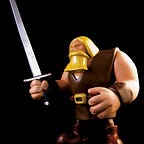Kato’s Comeuppance
Tarantino swipes at the Lee myth (Mythmaking in the Martial Arts, Part 5 Addendum A)
I recently decided some of my longer addenda were actually stories of their own, and easier to find, track, etc., if broken out as such, especially since my addenda seem prone to sprouting addenda of their own. To anyone who has already seen them and has thus been gulled into clicking an article you have already seen, whatever, no bigs — in fact, why not give it another read? You might find something you missed last time.
This one I’ve chosen to start with has gained new currency, perhaps, by its recent bagging of a pair of gold statues at the self-congratulatory party Hollywood likes to throw itself annually.
A couple of things came up for me while watching Quentin Tarantino’s Once Upon a Time in Hollywood, some relating to the Manson murders, some to Bruce Lee, and some, surprisingly, to both. The first was the generally declining Hollywood system of the late ’60s and the growing focus on lowering budgets, including the Spaghetti Western, which main character Rick Dalton (Leonardo DiCaprio) initially resists, but eventually performs in. As I’ve noted, this paralleled the rise of the kung fu genre.
Then El Coyote. This is a great Mexican-American place I try to visit whenever I’m in LA for their huge, tasty plates and margaritas. And I knew it was a longtime fixture of the area but had no idea it’s actually approaching its 90th anniversary. Nor did I know Sharon Tate and her pals ate there the night before they were gruesomely murdered. With industry events like E3, my work with Disney, and my abortive partnership with David Lynch, among others, I’ve been to El Coyote many times, memories of which have a newly acquired spooky air.
Next I found out Jay Sebring, who “discovered” Lee was also Tate’s boyfriend until she met Roman Polanski during the filming of Fearless Vampire Killers. She and Polanski later married, but Sebring remained her close friend. Perhaps he was even the hookup for Lee as “Karate Advisor”, specifically for Tate’s scene in The Wrecking Crew, which also appears in the Tarantino movie. Sebring was with Tate when the Mason “family” came to her house and was also killed.
There’s a weird twist here not covered in the Tarantino film, and which, let me be clear, I give zero credence: some, including Polanski, believed Lee was responsible for Tate’s death. The link is paper thin and I only mention it for context. Polanski was a student of Lee’s and they saw each other the day afterwards, at which time Lee mentioned he had lost his glasses. One clue left at the Tate-Polanski home was an unidentified pair of specs.
Finally, let’s get to the Bruce Lee scene, as you might’ve known I would. The scene includes Lee (Mike Moh) idolizing Muhammad Ali and making claims about how a fight between them would go, which provokes derision from fictional stuntman Cliff Booth (Brad Pitt), and a subsequent three-round martial contest, which is interrupted before it can be resolved.
Of course, I’ve discussed Lee’s Ali obsession, as well as his loudmouthed braggadocio. The Ali stuff is well known and even appears on film, while the latter aspect of Lee’s personality can easily be gleaned from the swagger he projects in his interviews, and borne out by the firsthand statement from a coworker, “No one liked him […]”.¹ Cliff’s scoffing at Lee’s boastfulness mirrors comments from IRL stuntman Gene LeBell, and the action plays out how he suggests it would in a fight between Lee and someone larger: “You’d grab him and [throw him] out the window”.² The format of the combat suggested by the film’s Lee is additionally reminiscent of that between Lee and Vic Moore at the 1967 Long Beach tournament.³
I can’t imagine Tarantino has read this series, but it seems clear he drew from some of the same sources I did for his portrayal of Lee. And clearly Tarantino had previously been a fanboy, dressing the Bride (Uma Thurman) in a black-and-yellow tracksuit and Onitsukas in 2003’s Kill Bill: Volume 1, a clear homage to Lee’s outfit in Game of Death, so something more recent must have caused his crisis of faith.
Tarantino also engages in some anachronism; presenting a fully fledged groovy Lee complete with the chicken noises that were to become his signature, but in the period depicted he wasn’t remotely a star, just a minor actor playing a sidekick on a soon-to-tank small-screen supeshow — far closer to the square early Lee of his first screen test.
Devotees of St. Lee were naturally quite upset by the film’s sacrilegious portrayal as were legacy owners Linda Lee Cadwell and Shannon Lee, the latter quickly and predictably responding,
“ […] he was picked on [by the film] in the way that he was picked on in life by white Hollywood.”
Still, even this controversy serves to renew interest in Lee, just as films about how rotten the movie biz is ultimately serve only to expand its myth.
Read subsequent articles in the Mythmaking in the Martial Arts series
Read previous articles in the Mythmaking in the Martial Arts series
Notes
- Paisley Rekdal, The Night My Mother Met Bruce Lee: Observations on Not Fitting In, 2000.
- I Am Bruce Lee, 2012.
- GrandMaster Vic Moore: The Man That Fought ’Em ALL!!!, 2013.
